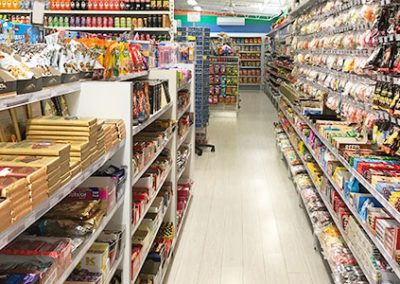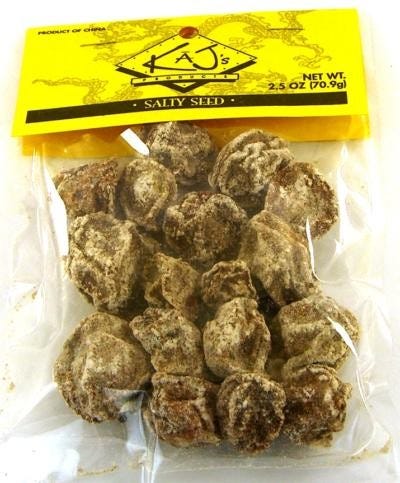The Only Guide to I Luv Candi
The Only Guide to I Luv Candi
Blog Article
About I Luv Candi
Table of ContentsI Luv Candi - TruthsFacts About I Luv Candi UncoveredHow I Luv Candi can Save You Time, Stress, and Money.Unknown Facts About I Luv CandiRumored Buzz on I Luv Candi
We have actually prepared a whole lot of organization prepare for this kind of project. Below are the common consumer sectors. Consumer Segment Summary Preferences Exactly How to Locate Them Children Youthful consumers aged 4-12 Vivid sweets, gummy bears, lollipops Partner with local schools, host kid-friendly events Teens Adolescents aged 13-19 Sour sweets, novelty items, trendy treats Engage on social media, team up with influencers Parents Adults with kids Organic and much healthier options, sentimental candies Deal family-friendly promotions, promote in parenting publications Students College and university students Energy-boosting sweets, inexpensive snacks Companion with nearby universities, promote throughout exam durations Gift Shoppers Individuals searching for presents Costs delicious chocolates, gift baskets Create appealing displays, offer adjustable present choices In examining the monetary dynamics within our candy store, we've located that customers typically invest.Monitorings show that a regular consumer often visits the store. Certain periods, such as vacations and special events, see a rise in repeat visits, whereas, throughout off-season months, the frequency may decrease. spice heaven. Calculating the lifetime value of an ordinary customer at the sweet-shop, we estimate it to be
With these variables in consideration, we can deduce that the typical earnings per consumer, over the training course of a year, hovers. The most profitable customers for a sweet store are usually family members with young youngsters.
This market tends to make frequent purchases, increasing the shop's income. To target and attract them, the candy store can use vivid and lively marketing approaches, such as vibrant screens, memorable promotions, and perhaps also organizing kid-friendly occasions or workshops. Developing an inviting and family-friendly environment within the shop can also boost the general experience.
The Main Principles Of I Luv Candi
You can likewise approximate your own earnings by applying various presumptions with our monetary plan for a sweet-shop. Ordinary regular monthly revenue: $2,000 This kind of sweet-shop is often a small, family-run business, maybe recognized to locals however not bring in multitudes of tourists or passersby. The store might provide a selection of common sweets and a few homemade deals with.
The shop does not normally carry rare or costly items, concentrating rather on economical treats in order to maintain routine sales. Assuming an ordinary spending of $5 per customer and around 400 clients each month, the monthly profits for this sweet-shop would certainly be approximately. Average month-to-month revenue: $20,000 This sweet-shop gain from its strategic place in a busy urban location, drawing in a multitude of customers seeking wonderful extravagances as they shop.
Along with its varied candy selection, this store might additionally market related products like gift baskets, sweet arrangements, and novelty items, supplying numerous income streams - da bomb australia. The store's area calls for a higher spending plan for rent and staffing however results in greater sales volume. With an estimated average costs of $10 per consumer and concerning 2,000 customers monthly, this store can produce
I Luv Candi Fundamentals Explained
Found in a major city and visitor destination, it's a huge facility, often spread over several floorings and perhaps component of a nationwide or global chain. The shop supplies an enormous variety of sweets, including special and limited-edition things, and product like top quality apparel and devices. It's not simply a store; it's a destination.
These destinations assist to attract countless site visitors, significantly increasing prospective sales. The functional prices for this sort of shop are considerable due to the area, size, team, and includes offered. However, the high foot traffic and ordinary costs can cause significant earnings. Assuming an ordinary purchase of $20 per customer and around 2,500 consumers monthly, this front runner shop might attain.
Classification Instances of Expenditures Ordinary Regular Monthly Price (Range in $) Tips to Reduce Expenses Rental Fee and Utilities Store lease, electrical energy, water, gas $1,500 - $3,500 Think about a smaller area, discuss lease, and utilize energy-efficient lighting and appliances. Supply Candy, treats, packaging products $2,000 - $5,000 Optimize stock monitoring to reduce waste and track popular items to stay clear of overstocking.
Advertising And Marketing Printed products, on-line ads, promos $500 - $1,500 Emphasis on cost-effective digital advertising and use social media systems absolutely free promo. sunshine coast lolly shop. Insurance Service obligation insurance coverage $100 - $300 Store around for affordable insurance policy rates and take into consideration packing plans. Equipment and Maintenance Money signs up, display racks, repair services $200 - $600 Buy secondhand equipment when feasible and carry out normal upkeep to expand equipment lifespan
Getting My I Luv Candi To Work
Credit Rating Card Processing Fees Costs for processing card settlements $100 - $300 Discuss reduced processing charges with payment processors or check out flat-rate alternatives. Miscellaneous Workplace materials, cleansing materials $100 - $300 Buy in bulk and seek discounts on materials. A candy shop ends up being lucrative when its overall profits surpasses its overall set prices.

A large, well-located sweet-shop would certainly have a greater breakeven factor than a small store that does not need much income to cover their expenses. Curious regarding the success of your candy more tips here shop? Check out our user-friendly economic strategy crafted for candy stores. Merely input your very own presumptions, and it will help you compute the amount you need to earn in order to run a rewarding service.
Getting My I Luv Candi To Work

Last but not least, economic declines that reduce customer spending can affect sweet-shop sales and productivity, making it vital for sweet-shop to handle their costs and adjust to altering market conditions to remain lucrative. These hazards are commonly consisted of in the SWOT analysis for a sweet-shop. Gross margins and net margins are crucial indications utilized to gauge the profitability of a sweet-shop business.
Essentially, it's the earnings staying after subtracting costs directly pertaining to the candy stock, such as acquisition costs from providers, manufacturing costs (if the candies are homemade), and personnel wages for those entailed in production or sales. Net margin, alternatively, variables in all the expenses the candy store incurs, including indirect expenses like management expenses, advertising, rental fee, and tax obligations.
Sweet stores typically have a typical gross margin.For instance, if your sweet-shop makes $15,000 per month, your gross earnings would certainly be roughly 60% x $15,000 = $9,000. Let's highlight this with an instance. Take into consideration a candy shop that sold 1,000 candy bars, with each bar valued at $2, making the total earnings $2,000. The store sustains costs such as purchasing the sweets, energies, and wages for sales staff.
Report this page